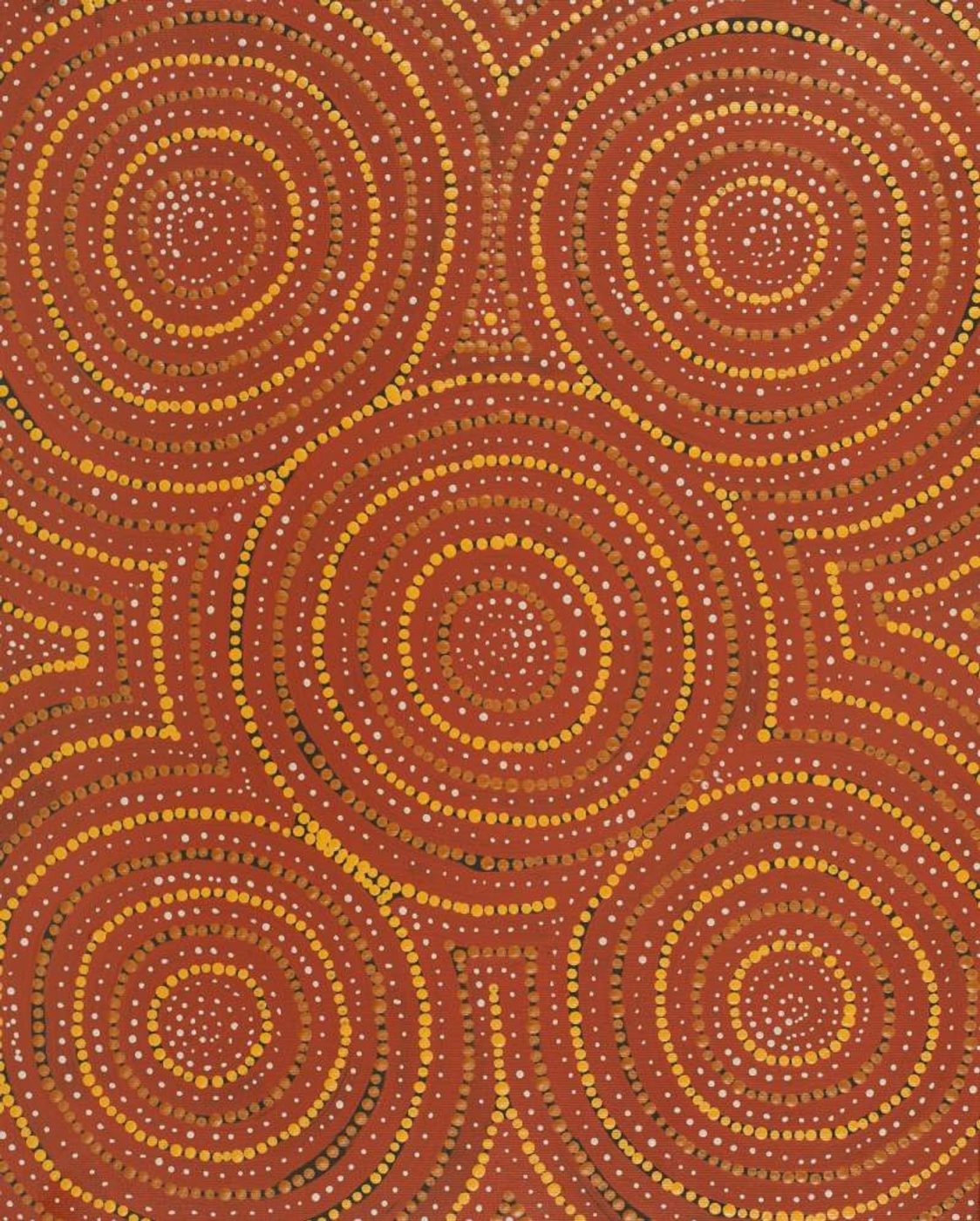Ngalyipi Jukurrpa (Snake Vine Dreaming) – Purturlu
The ‘ngalyipi Jukurrpa’ (snakevine [Tinospora smilacina] Dreaming) depicted in this painting comes from Purturlu (Mount Theo), located approximately 150kms north-northwest of Yuendumu. The ‘kirda’ (owners) of this Dreaming are Napanangka/Napangardi women and Japanangka/Japangardi men. The ‘kurdungurlu’ (custodians) for this Dreaming are Nangala/Nakamarra women and Jangala/Jakamarra men. A number of other Dreamings are also located in, or pass through, Purturlu; these include ‘wakurlpirri Jukurrpa’ (Dogwood tree Dreaming), ‘wardapi Jukurrpa’ (goanna Jukurrpa), and ‘kanta Jukurrpa’ (bush coconut Dreaming).
‘Ngalyipi’ (snakevine) is a green creeper that climbs up the trunks and branches of trees and shrubs. The plant is found on sandy spinifex plains and sandhills. ‘Ngalyipi’ is frequently depicted in paintings due to its many uses and its great importance in the initiation ceremonies of young Japanangka/Japangardi men. The vine can be used as a shoulder strap to carry ‘parraja’ (coolamons) and ‘ngami’ (water carriers). The plant also has medicinal uses; its vines are used as tourniquets, and its leaves and vines are used as bandages for wounds. Warlpiri sometimes also chew the leaves to treat severe colds. ‘Ngalyipi’ stems can be pounded between stones and tied around the forehead to cure headaches. In men’s initiation, ‘ngalyipi’ is used to tie the ‘witi’ (ceremonial poles) to the shins of the dancing initiates, and to tie ‘yukurruyukurru’ (dancing boards) to dancers’ bodies. The initiation ceremonies associated with the ‘ngalyipi’ Dreaming at Purturlu are for the sons and grandsons of Japanangka and Japangardi men. Napanangka and Napangardi women dance at these ceremonies, and then look away and block their ears when the men dance. This ‘witi’ ceremony is performed at night under the stars.
In contemporary Warlpiri paintings, traditional iconography can be used to represent the Jukurrpa, particular sites, and other elements. In many paintings of this Jukurrpa, sinuous lines are used to represent the ‘ngalyipi’ (snake vine). Straight lines are used to represent the ‘witi’ (ceremonial poles) and ‘karlangu’ (digging sticks).
